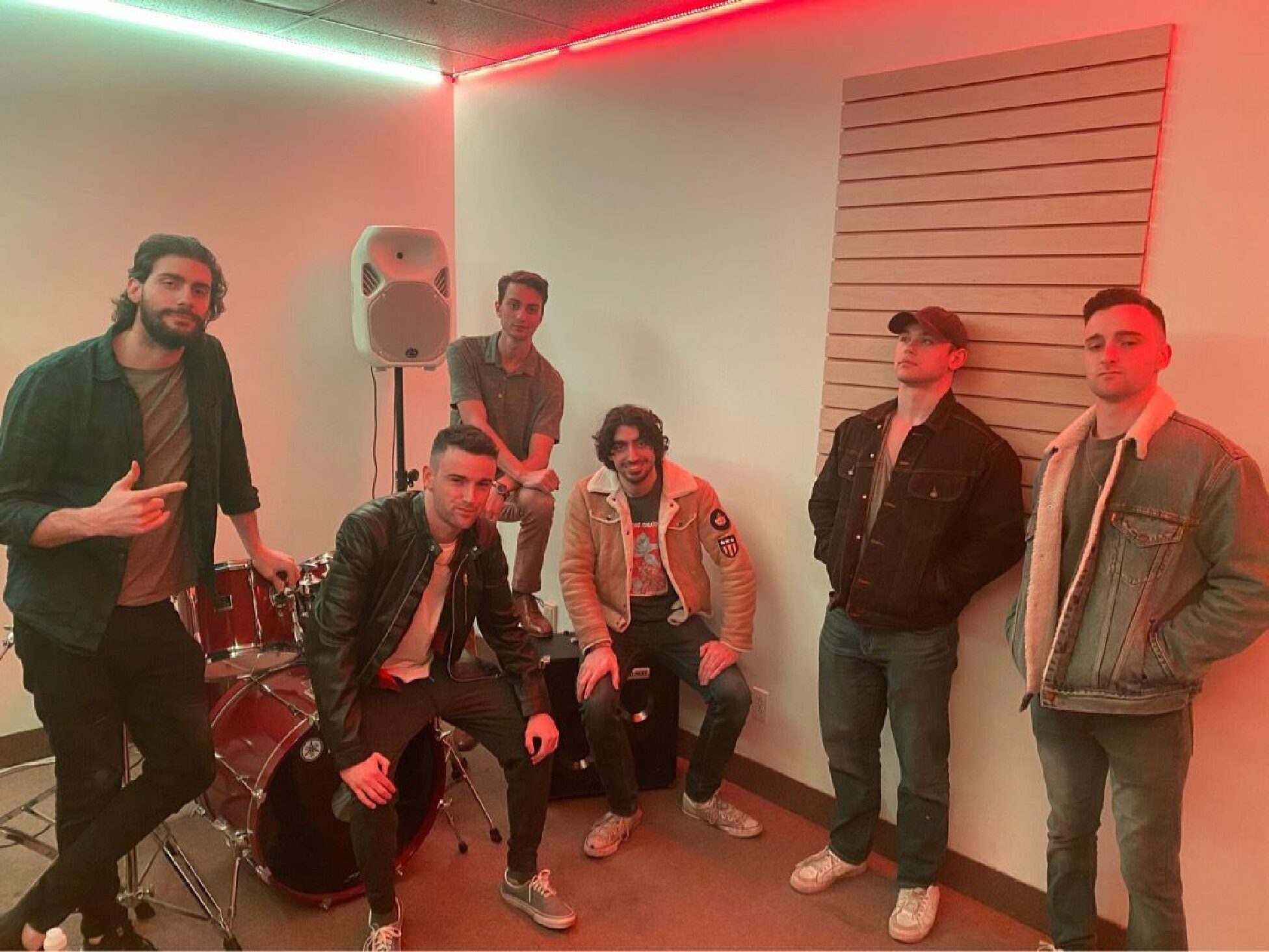Discover Montreal’s rising stars and their journey through music.
In the heart of Montreal’s vibrant music scene, a phenomenon is brewing—an infectious blend of friendship, passion, and creativity known as The Silver Skies band. This dynamic sextet, comprising Christopher Chenevert, Charles Rabbat, Phillip Rabbat, Simon Lafortune, Jonathan Shapiro, and Aidan Shapiro, is redefining the city’s musical landscape with their unique fusion of indie, funk, rock, and pop, captivating audiences and critics alike with their electrifying performances.
Their journey began when Chenevert moved to Outremount and met the musically gifted Rabbat brothers. With Chenevert and Rabbat playing the guitar and Chenevert on the drums, they started playing together. Soon Lafortune, Chenevert’s childhood best friend, joined. Bonding over their shared passion for music, they began jamming together in a basement, laying the groundwork for their musical journey.
“The neighbors hated us,” said Chenevert humorously, as Ninja, the Rabbat brother’s cat, raced around their house, temporarily distracting the group during the interview. “But those jam sessions were where it all started.”
The four had no singing skills and sought out vocalists via Facebook advertisements. Their lineup solidified on April 16, 2021, when the twin Shapiro brothers, joined the band. “I think like that’s our anniversary,” said Chenevert nostalgically, glancing over at the rest of his band with a smile on his face.
Finding the perfect moniker proved to be no small feat for the band—in fact, it took over eight months before the group landed on their iconic name. “We gave our producer a list of like 10 names, and he chose two that he liked. One of them was The Silver Skies, and that was my idea,” Rabbat said. “The reason why I came up with it was because, well, today is actually a perfect example. Look at the sky, it’s gray. Gray skies are a depressing way of seeing it. Instead of saying ‘Gray Skies,’ it’s ‘Silver Skies.”
The band’s journey wasn’t without hurdles that went beyond the choice of a name. One of their major challenges revolved around fostering active listening and clear communication. Chenevert openly acknowledged the diverse nature of their personalities, particularly within the dynamic of a band where individuals with varying traits come together. He admitted to the ongoing struggle of navigating through personality conflicts and interpersonal challenges inherent in collaborative efforts. “The greatest thing about us is that over time, we’ve learned to communicate. So even though we disagree, and sometimes we have to shout over the drums, we learn each other’s talking styles,” said Shapiro.
Since their humble beginnings, The Silver Skies members have taken the Montreal music scene by storm, one gig at a time with their electrifying live performances. Their favorite show to date is a memorable night at Blue Dog on June 9, 2023, where the band’s energy and connection with the crowd reached fever pitch. Encouraged by the crowd to keep going even after being told that their set was done, the band kept playing. “Blue Dog was dope. It was a small venue, but the vibe was there. Even though they cut us off, we had a rock and roll attitude,” said Rabbat.
The Silver Skies recently unveiled their latest single, “Drive Me Crazy,” a song that holds a unique place in their repertoire as both their newest and oldest creation. Written by the youngest duo of the group, the Shapiros wrote the song at 16-years-old. It stayed untouched for years until they met the other band members. It was the first song they performed together as a group and, now, their first released single. It is currently out on every streaming platform. Fans can look forward to the upcoming release of Silver Skies’ new single, “Emotional” set to hit the airwaves very soon.
As they look ahead to the future, The Silver Skies members have their sights set on even greater heights. One of their aspirations is collaborating with another local Montreal band, Mr. Patterson, who once opened for them at L’Escogriffe Bar back in February.
When asked how fans could help support them, Chenevert said, “If you like our music, please share it with other people. The best thing you could do to help us is share it with your friends and family. Don’t keep it to yourself.”
With its infectious enthusiasm and unwavering dedication, The Silver Skies continues to reach for the stars. As members navigate the ever-evolving landscape of the music industry, one thing remains clear—with The Silver Skies, the sky’s the limit.
